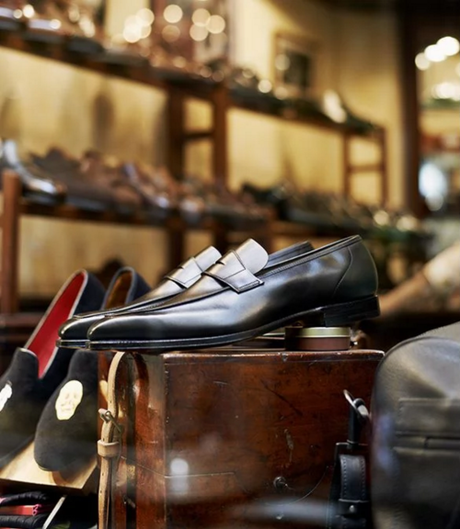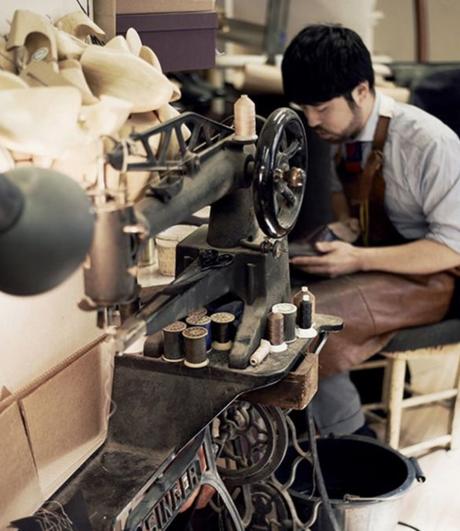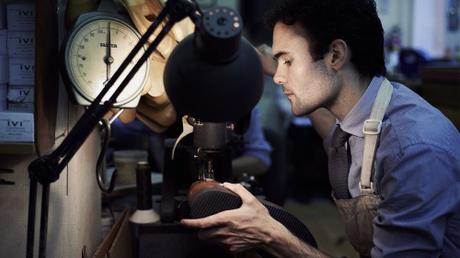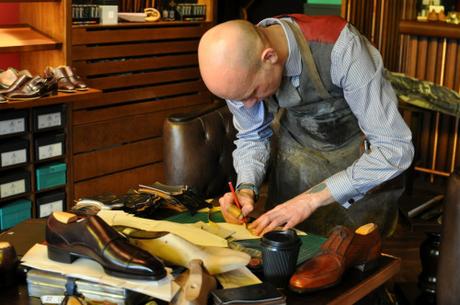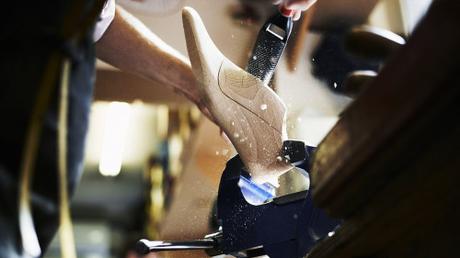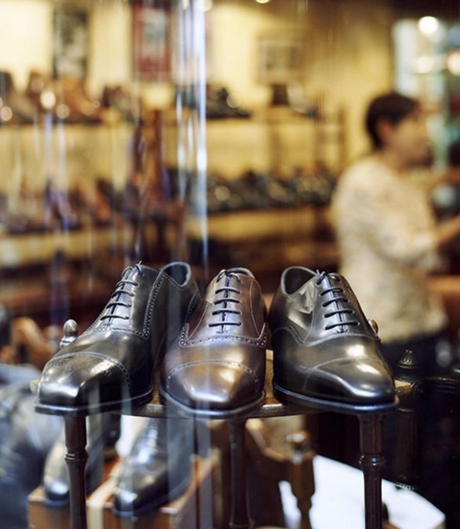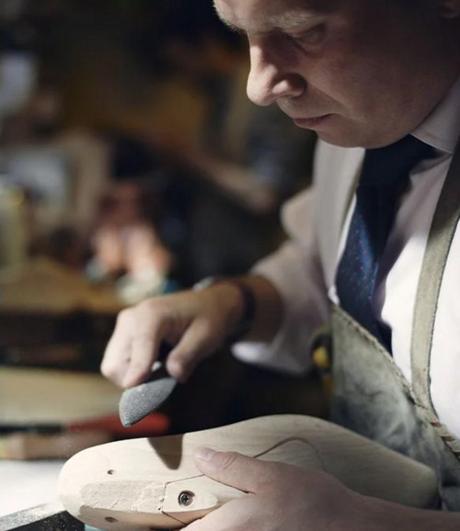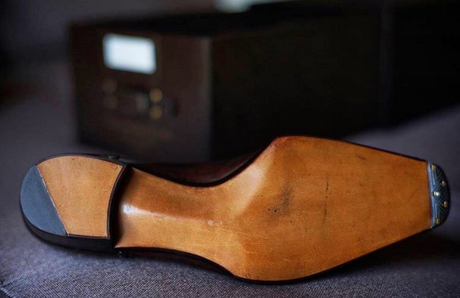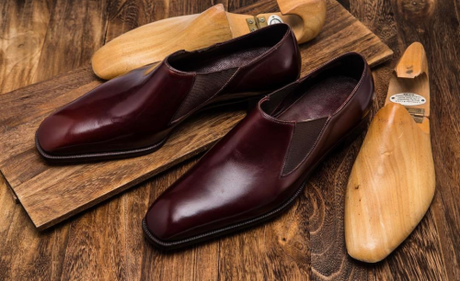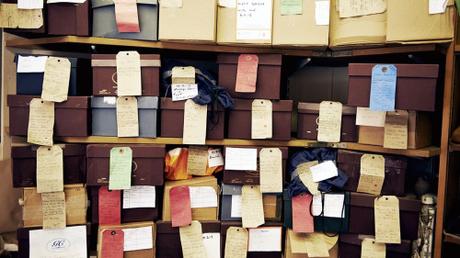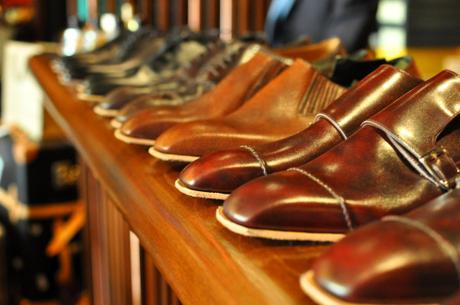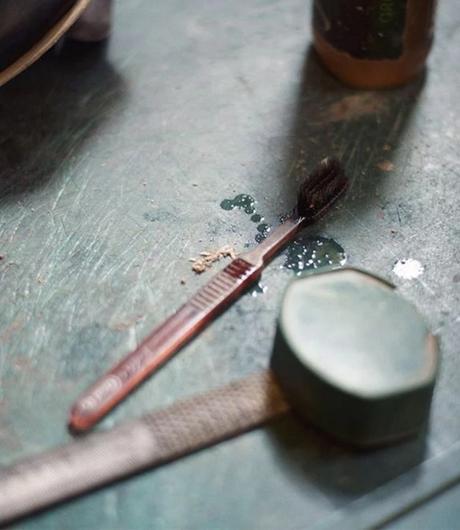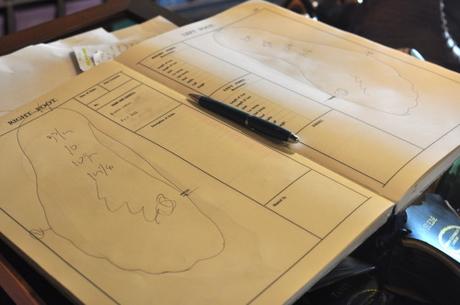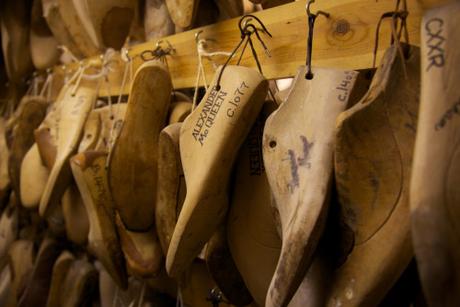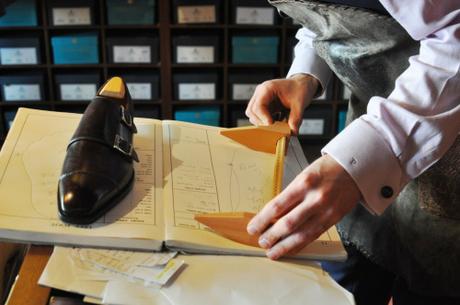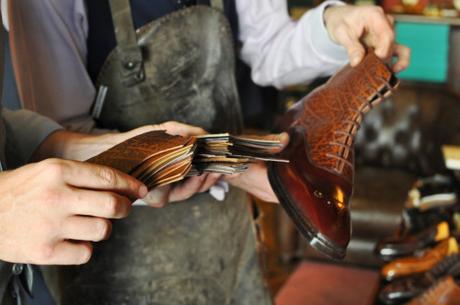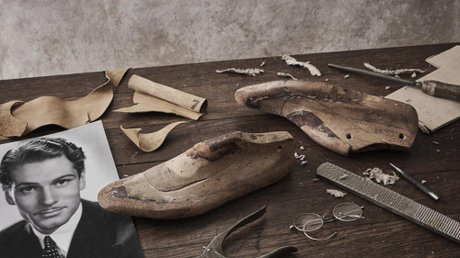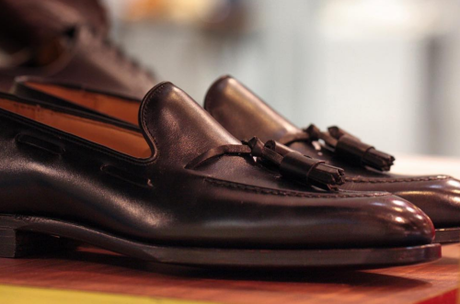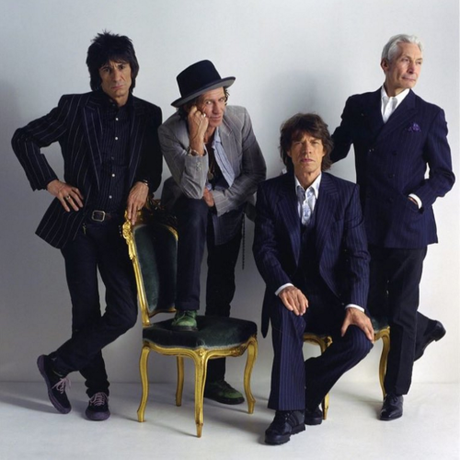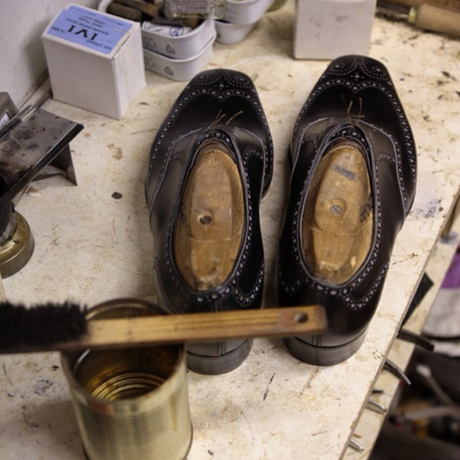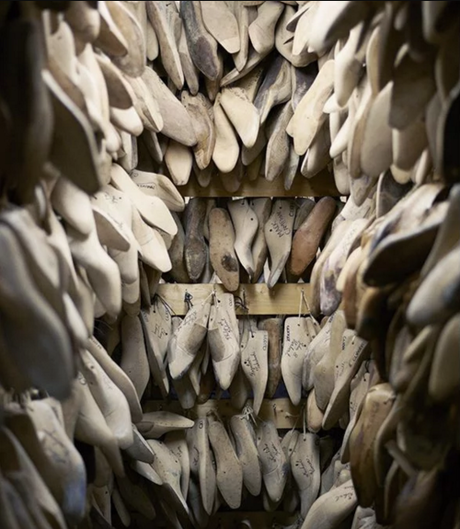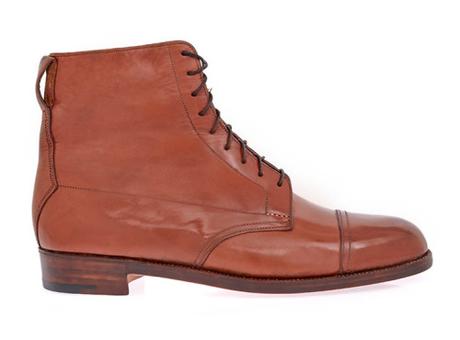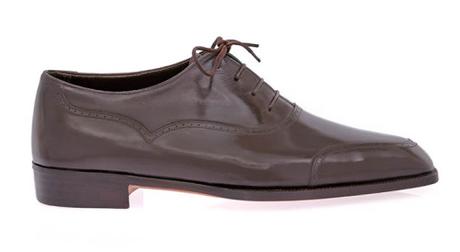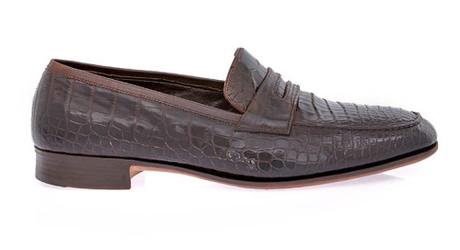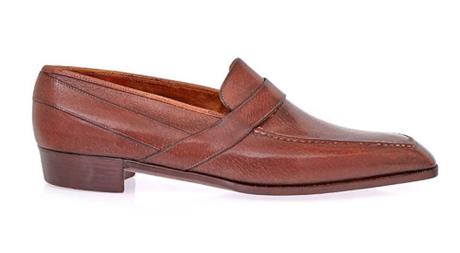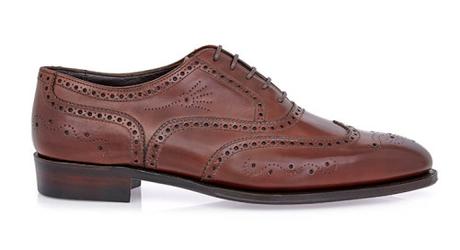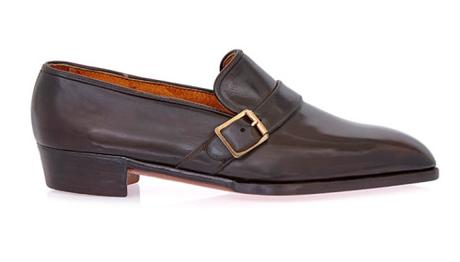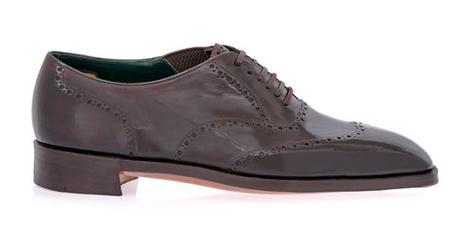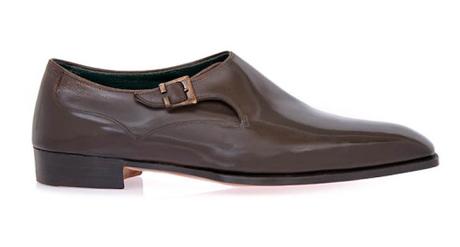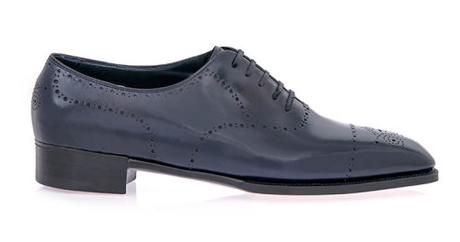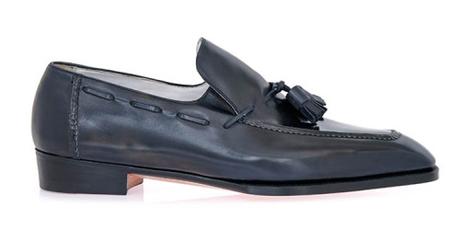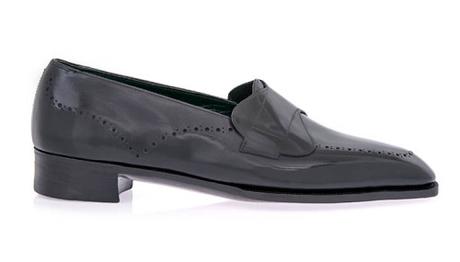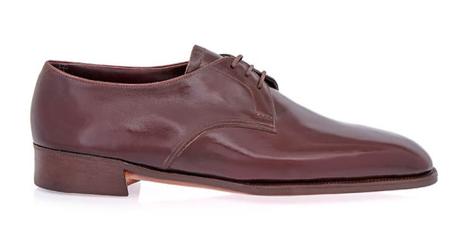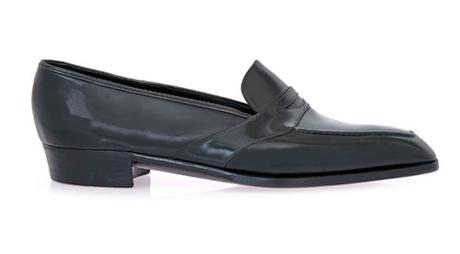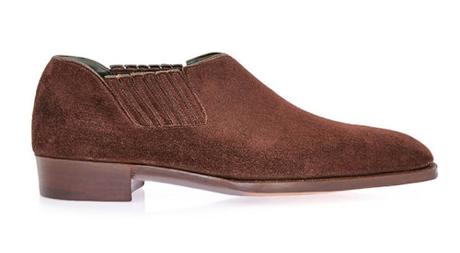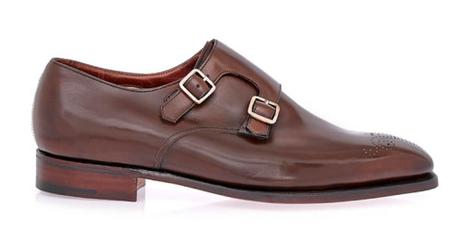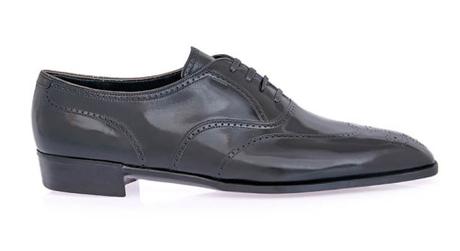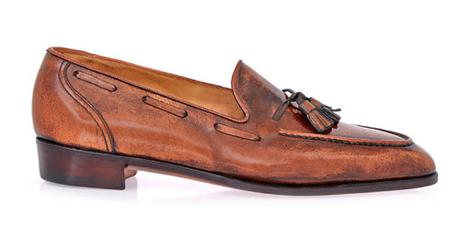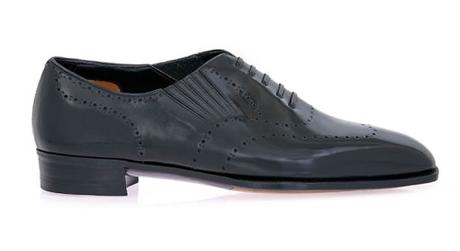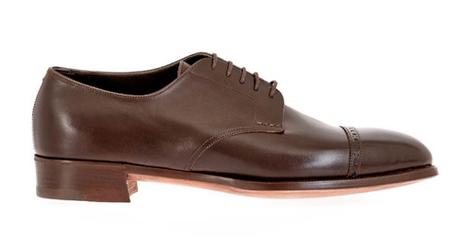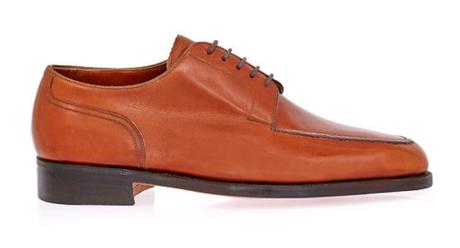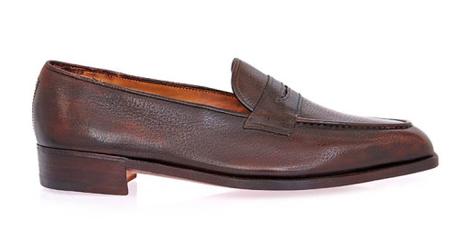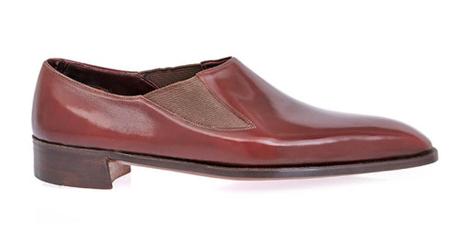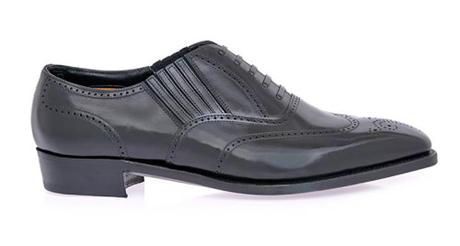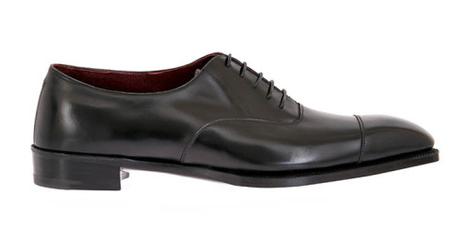
Even for men who are used to ordering clothes from bespoke tailors, bespoke shoes smack of excess. As Peter Mayle once wrote in his book Acquired Taste, custom shoes are more shameful than a passion for cashmere socks. “What could possibly justify the difference in price between shoes made by hand and shoes made by machine?,” he asks. “Unlike the miracles of disguise that a tailor has perform in order to camouflage bodily imperfections, the shoemaker’s task is simple. Feet are feet.”
Curious to know what they’re like, I ordered my first pair of bespoke shoes last year from Nicholas Templeman. I can’t say they fit better than ready-to-wear, at least for my fairly standard sized feet, although they are noticeably more comfortable out-the-box. I can’t even say they’re better constructed than similar, handwelted shoes from Vass or Enzo Bonafe. For me, the pleasure is all in the process and craft – being able to order anything you want from someone who makes exquisitely beautiful things. There are ready-to-wear manufacturers these days who will produce shapely shoes, yes. As well as companies where you can find a good fit. But with bespoke, everything comes together in whatever design you please. In terms of pure enjoyment, bespoke feels special.
Having been bitten by the bug, I now have two new pairs of shoes on order. One is a pair of Norwegian split toes from Nicholas Templeman (partly inspired by JM Weston’s Hunt derby); the other is a pair of dark brown wingtip derbies from G.J. Cleverley.
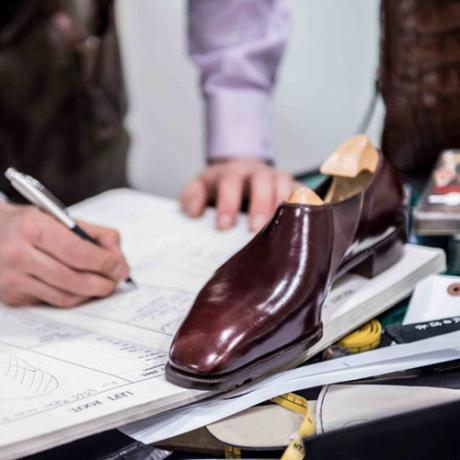
Bespoke shoemaking in London is strange. Most of the West End firms share the same outworkers (which is a traditional system in the region; not a new invention to cut costs). Which means, although firms will often have dedicated lastmakers, the rest of the process is commonly farmed out to people who are working for multiple companies. So, aside from the company’s last style and level of service – which are certainly important – it can be hard to tell how these companies differentiate from each other.
One way Cleverley differs is price. Of the three main firms on the West End, Cleverley is the most the most affordable. Foster & Son had a big 50% price increase two years ago, and John Lobb has always been astronomically high. Cleverley, by contrast, is about twice the price of a pair of Saint Crispin’s. Not cheap by any means, but also not too big of a jump if you’re already used to buying shoes in that price range.
The other difference is that Cleverley feels more like a modern luxury company (I don’t mean this in a good or bad sense, just a notable difference). They have very visible celebrity clients – most of whom I don’t care about, although I can’t say it hurts to have certain men I admire wear Cleverley, such as Bruce Boyer and Graydon Carter. Additionally, they have an extensive ready-to-wear line. There’s the George Cleverley collection; the more finely detailed Anthony Cleverley line; and then the shoes they make for Mr. Porter’s Kingsman label. Even with these ready-made shoes, the focus of the business still feels solidly centered on bespoke (which is not always a given when a company tries to scale).

There are also the stories – the tons and tons of stories. The one of the 200+ year-old Russian reindeer hides, which were retrieved from a sunken ship at the bottom of the English Channel, but now are available exclusively through Cleverley if you want a pair of shoes made from uniquely aged leathers. Or how George Cleverley used to work with the famous, early 20th-century society shoemaker, Nikolaus Tuczek. Tuczek’s shoes have become something of collector items for shoemakers, particularly in Japan.
Or my favorite, the stories of Alexis von Rosenberg, the Baron de Redé, who owned hundreds of Cleverley shoes. The Baron apparently had this room that was covered in hidden, built-in closets, which spanned the room from floor to ceiling. Behind each wall were racks of Cleverley shoes – most of which were multiples of the same styles (as you can see above). Black cap-toe oxfords (four-eyelets, of the Baron’s design); black imitation brogues for day wear; a signature tasseled loafer (which Cleverley still sells); and lots of opera pumps, as the Baron spent much of his time entertaining. Why someone would need dozens of pairs of the same shoe, each of which were designed to last decades, I have no idea.
And, of course, the story of how George Cleverley himself used to insist on his “suspiciously square” toe design – something that has become something of a signature for the company. Supposedly, clients who wanted almond shaped toes used to be directed to John Lobb across the street. Who knows if that’s just a marketing line, although G.J. Cleverley today is much more flexible.

Obviously, all that has little bearing on the craft – it’s just romance (although, what would be the point of buying clothes if they didn’t come with some romance?). The difference between ordering from Cleverley and Templeman so far has been two-fold.
First, since Cleverley is a much larger firm, they have a larger, more stable stock of leathers. You can find almost anything you want from their swatchbooks (pictured above). That includes anything from multiple shades of ruddy chestnut calf to more exotic pigskins, alligator, and crocodile. There are also some exclusive skins, such as the Russian reindeer mentioned earlier.
Nicholas, by contrast, is a small, one-man shop, which means he carries very little as stock. Instead, he has a few swatchbooks he relies on (also filled with plenty of colors – a range bigger than anything you can get in ready-to-wear). If you want something more, however, he’ll have to dig through the backrooms of local merchants and send you cuttings (which he’s happy to do). I wouldn’t say the selection in this way is smaller, but the process of finding the right leather is different.
The second difference is the service – which, I’ll have to say, Nicholas has set an impossibly high bar. It would be hard to beat Nicholas in this regard. I’ve been able to fuss over incredibly small details with him, from the last shape to specific curvatures in the apron. Nicholas has always been happy to answer emails and take phone calls, as well as send photos of the shoes being made throughout the process.
Cleverley, on the other hand, is much larger firm. And while George Glasgow, the company’s current proprietor, is friendly, I can’t imagine bothering him with the same details. To note, my appointments with Nicholas have been as long as I’d like; my appointments with Cleverley have been limited to thirty minutes before the next customer comes in. George will still attend to you after that, although sometimes his time is split. It’s felt strange to have such crowded appointments, which isn’t something I’ve experienced with any other bespoke maker. Partly for that reason, I’ve gone with a somewhat simple, straightforward design – brown wingtip derbies with a beveled waist – instead of something more complicated.
That said, I’m looking forward to seeing how the shoes turn out. I’ve gone with Cleverley’s “suspiciously square” toe on this order – a good description for both their house style and my personality. I’ll post more about them once they’re finished.
* Readers are rightfully suspicious these days of the relationship between bloggers and bespoke makers. So I should note that I’ve paid full price for my shoes from Nicholas Templeman and G.J. Cleverley. This post was written because I’m enthusiastic about each company’s craft.
